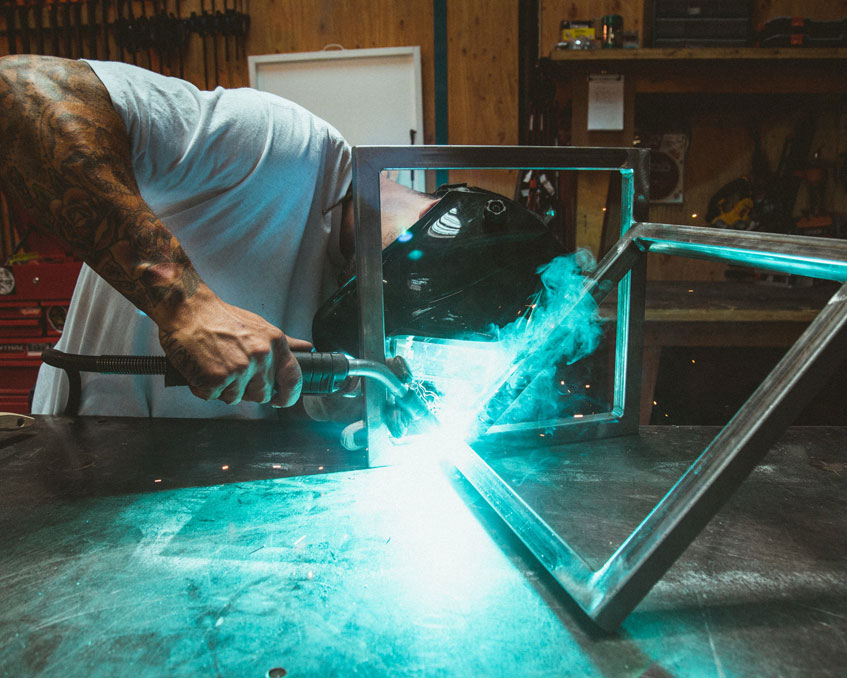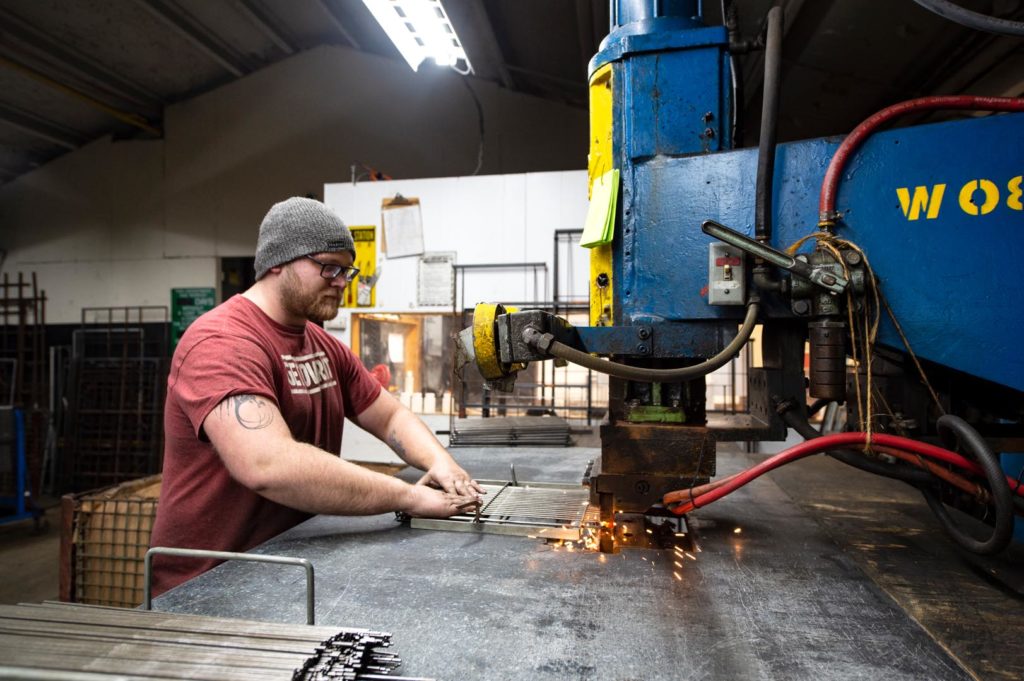Everything about Welding: Key Insights Into Techniques and Finest Practices for Success
Welding incorporates a selection of techniques, each suited for particular materials and applications. Understanding these approaches, such as GMAW, SMAW, and TIG, is vital for accomplishing suitable results. The ideal devices and safety methods can not be neglected. As preparation and repairing play vital duties in the welding process, understanding these components can greatly enhance the quality of the end product. What are the vital variables that ensure an effective weld?
Understanding Various Welding Techniques
Welding methods include a selection of approaches, each matched to particular applications and materials. Amongst one of the most typical methods are Gas Steel Arc Welding (GMAW), Shielded Metal Arc Welding (SMAW), and Tungsten Inert Gas Welding (TIG) GMAW, likewise called MIG welding, is preferred for its speed and convenience, making it perfect for slim materials. SMAW, or stick welding, is preferred for its simplicity and performance in outside atmospheres, especially with thicker steels. TIG welding offers precision and control, making it appropriate for complex job and non-ferrous metals (Montana Mobile Welding and Repair Belgrade). Each method has its unique advantages and considerations, allowing welders to choose the very best approach based upon the project's needs, product kind, and preferred outcomes. Comprehending these techniques is necessary for successful welding
Vital Welding Equipment and Tools
While different welding techniques require specific abilities, the best devices and tools are just as important for accomplishing top quality results. Vital welding equipment consists of welding equipments, which differ depending upon the strategy-- such as MIG, TIG, or stick welding. Safety equipment, consisting of gloves, helmets, and aprons, guarantees security and convenience during the process. In addition, clamps and fixtures aid safeguard products in area, ensuring accuracy in welds. Consumables like welding rods, wire, and protecting gas are likewise crucial parts that affect the top quality of the weld. Additionally, devices such as grinders and cutters help with surface prep work and post-weld completing, contributing to a professional outcome. Purchasing top quality devices eventually enhances the performance and performance of welding jobs.
Security Practices in Welding
Correct security methods are important in the welding market to safeguard workers from possible dangers. Welders should wear appropriate personal protective devices (PPE), including safety helmets with appropriate shading, gloves, and flame-resistant garments. Adequate ventilation is essential to lower direct exposure to unsafe fumes and gases created during the welding procedure. In addition, workers need to be trained in the proper handling of welding devices to stop mishaps. Fire precaution, such as maintaining combustible products away from the welding location and having fire extinguishers conveniently available, are necessary. Normal inspections of equipment and work areas can assist identify possible hazards before they result in accidents. By sticking to these security techniques, welders can produce a much safer working setting and decrease dangers connected with their profession.
Preparing Products for Welding
Preparing materials for welding is a vital step that substantially influences the quality and stability of the final item (Montana Mobile Welding and Repair Belgrade Fabrication). Correct preparation involves cleaning up the surfaces to remove impurities such as rust, dust, and oil, which can jeopardize the weld. Strategies such as grinding, fining sand, or utilizing solvents are typically used to attain a clean surface. Additionally, making sure that the materials mesh well is vital; voids can bring about weak welds. It's likewise essential to take right into account the placement and positioning of the parts, as this will certainly affect the ease of welding and the final outcome. Choosing the ideal filler material and making sure compatibility with the base steels is crucial for accomplishing solid, durable welds.
Tips for Achieving High-Quality Welds
Attaining top notch welds calls for focus to detail and adherence to best practices throughout the welding procedure. Appropriate joint prep work is necessary, guaranteeing surfaces are clean and complimentary from contaminants. Selecting the appropriate filler product and welding method based upon the base steels is critical for suitable bonding. Keeping regular traveling rate and angle while welding can promote and protect against problems harmony. Additionally, regulating warm input is necessary; excessive heat can lead to bending and damaged joints. If required, routinely checking the welds during the procedure enables for prompt modifications. Employing suitable post-weld treatments, such as cleansing and stress and anxiety alleviation, can boost the resilience and honesty of the weld, eventually making sure a successful outcome.
Troubleshooting Typical Welding Issues
Welding frequently provides challenges that can influence the high quality and stability of the end product. Usual problems such as porosity, irregular weld grains, and overheating can occur, each calling for certain troubleshooting techniques. Comprehending these problems is important for welders to improve their welding steel to aluminum skills and attain ideal outcomes.
Porosity Issues Explained
Although porosity can frequently be overlooked, it remains a crucial problem in welding that can jeopardize the stability of a completed item. Porosity describes the visibility of small gas pockets within the weld bead, which can damage the joint and lead to premature failing. This problem normally occurs from contaminants, moisture, or inappropriate protecting gas coverage throughout the welding process. To mitigate porosity, welders need to verify that the base products are tidy and completely dry, make check that use of suitable protecting gases, and keep regular welding criteria. Regularly evaluating the devices and atmosphere can additionally assist identify possible issues before they show up in the weld. Dealing with porosity efficiently is important for attaining strong, sturdy welds that meet quality requirements.

Irregular Weld Beans
Irregular weld beads can significantly influence the quality and toughness of a completed item. Different elements add to this issue, consisting of improper traveling rate, wrong amperage settings, and inconsistent electrode angles. When the welder moves also quickly, a grain may appear narrow and do not have penetration, while moving too gradually can cause excessive buildup. In addition, using the wrong amperage can result in either undercutting or extreme spatter, both of which compromise weld honesty. The welder's technique, such as inconsistent lantern movement, can additionally result in uneven bead appearance. To alleviate these problems, welders need to concentrate on preserving steady, controlled movements and making sure proper tools setups to achieve harmony in their welds. Consistency is crucial to attaining trusted and solid welds.
Overheating and Bending Issues
Extreme warm throughout the welding process can result in substantial getting too hot and buckling concerns, affecting the structural honesty of the workpiece. These issues frequently materialize as distortion, which can jeopardize positioning and fit-up, making additional assembly testing. Variables adding to overheating consist of the option of welding criteria, such as voltage and take a trip speed, as well as the kind of material being bonded. To minimize these concerns, welders need to maintain consistent travel speed and ideal warm input while keeping an eye on the work surface temperature. Furthermore, preheating or post-weld heat treatment can aid relieve stresses brought on by fast air conditioning - Montana Mobile Welding and Repair Fabrication. Regular inspection and adherence to ideal practices are important in protecting against getting too hot and making sure the durability and reliability of bonded frameworks
Regularly Asked Questions
What Are the Career Opportunities in the Welding Market?
The welding market offers diverse job opportunities, including settings as welders, engineers, examiners, and educators. Professionals can operate in manufacturing, construction, aerospace, and automotive fields, gaining from strong demand and competitive salaries in different duties.
Exactly How Can I Enhance My Welding Speed Without Sacrificing Quality?
To enhance welding rate without sacrificing high quality, one must practice efficient techniques, maintain devices, maximize settings, and boost hand-eye sychronisation. Regular training and looking for feedback can likewise considerably add to achieving much Our site faster, top quality welds.
What Qualifications Are Readily Available for Welders?
Countless accreditations exist for welders, consisting of those from the American Welding Culture (AWS), the National Center for Construction Education and Research Study (NCCER), and various industry-specific organizations. These qualifications improve employability and show skill effectiveness.
Exactly How Does Welding Influence the Qualities of Metals?
Welding influences the properties of metals by changing their microstructure, which can result in changes in strength, hardness, and ductility. Warmth input and air conditioning prices during the process significantly affect these product features.
Can I Weld Dissimilar Metals Together?
